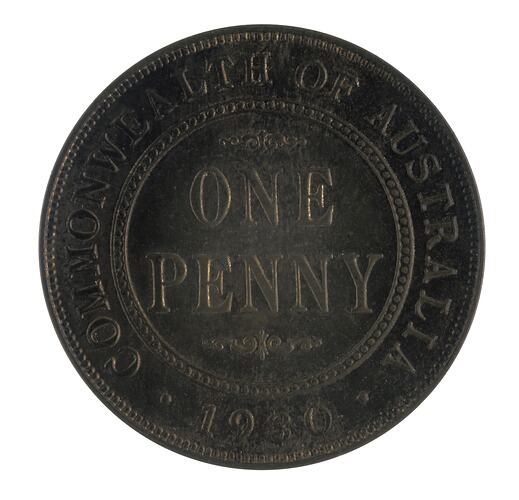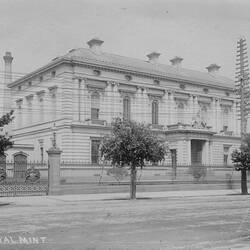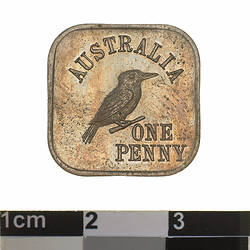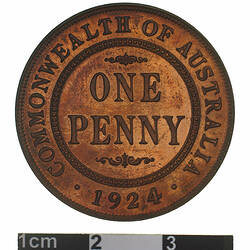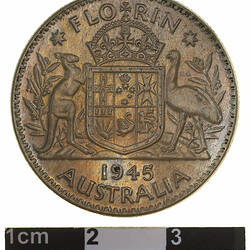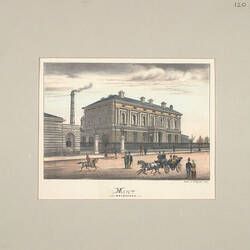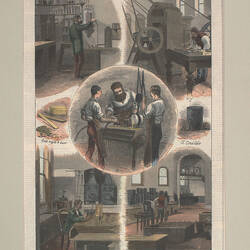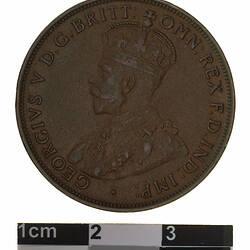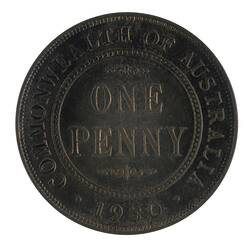In 1930 the country was in an economic depression and the Melbourne Mint received no orders from the Commonwealth Government for new coins. Orders for silver coins were always treated differently at the mint to those for bronze; silver could only be struck after an order was received. Bronze however could be stockpiled.
The new dies bearing the changed date 1930 were therefore tested for the bronze halfpenny and penny denominations even though no order existed. Stocks of the halfpenny were a little low so a small production run was undertaken; however there were plenty of 1929 pennies in store so only a few small trial runs to test the dies were made. The output of these runs were placed in the store with the 1929 coins but were so few that no record was made of their number.
A small number of specially prepared proof coins were made, six penny and six halfpenny pieces. These proofs were sent to the two major public numismatic collections in Australia, the National Gallery of Victoria (these were later transferred to Museum Victoria) and the Art Gallery of South Australia, and to the British Museum. It was 1931 before any new order for bronze coins was received and the stock of 1929 pieces with the additional few 1930 pennies was released.
The 1930 penny became the best known rare Australian coin and the proof examples, two of which were officially released by the museums to which they had been sent, are currently the most valuable Australian coins among collectors.
Reference
Sharples, J.P., "The 1930 Penny", Journal of the Numismatic Association of Australia, Vol.3, pp. 3-11.
More Information
-
Keywords
-
Authors
-
Article types
